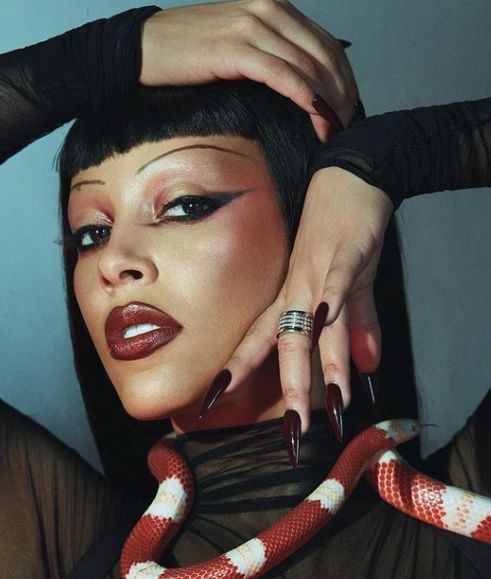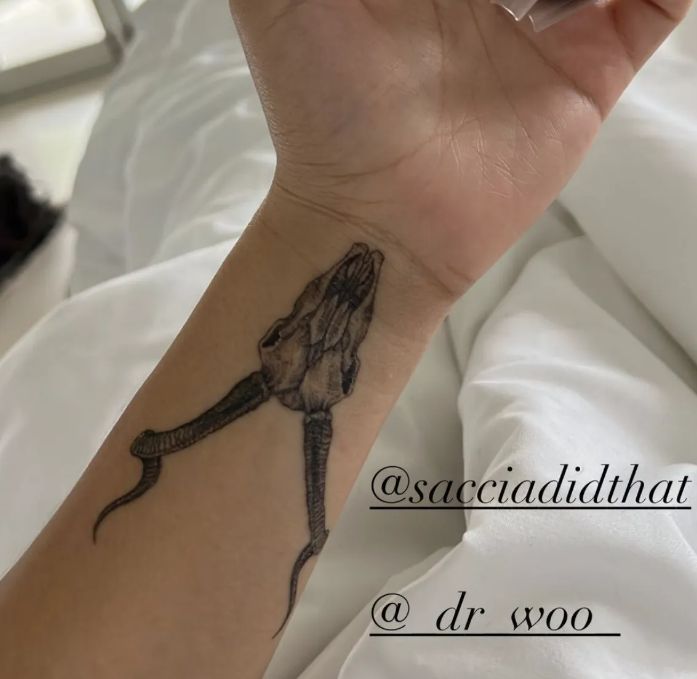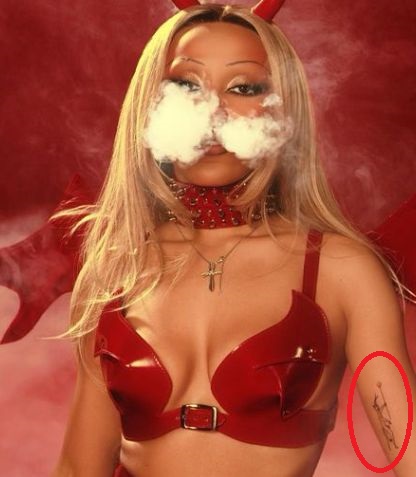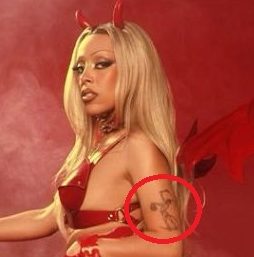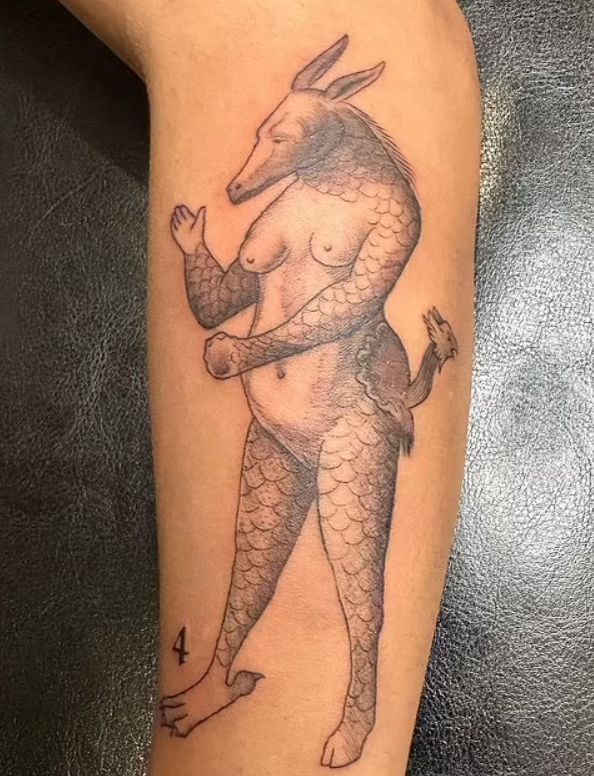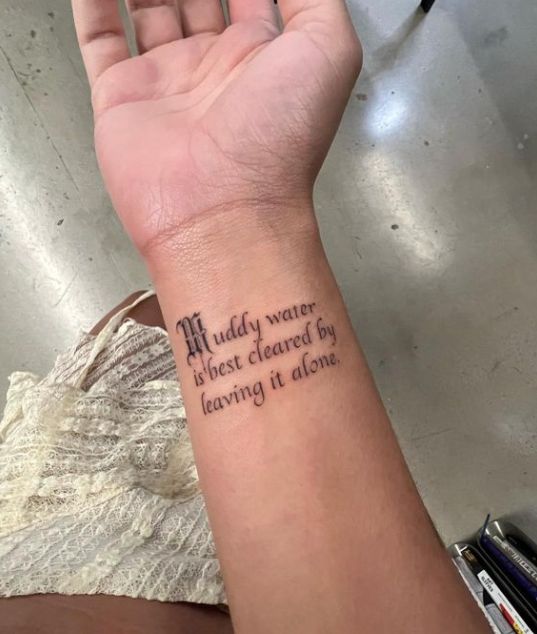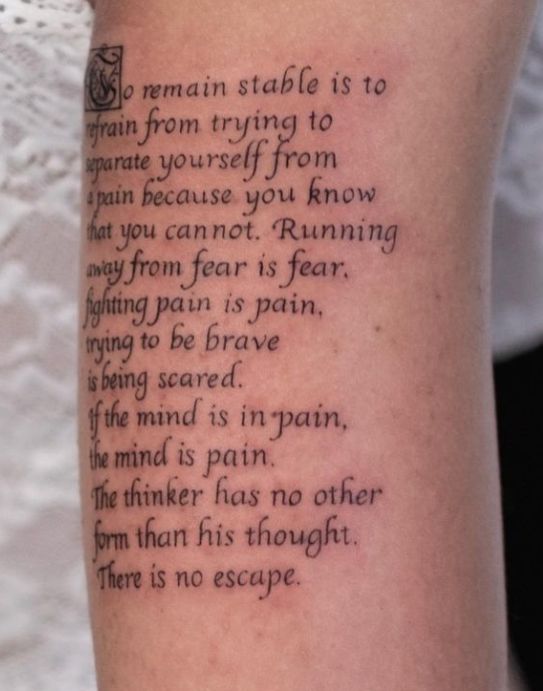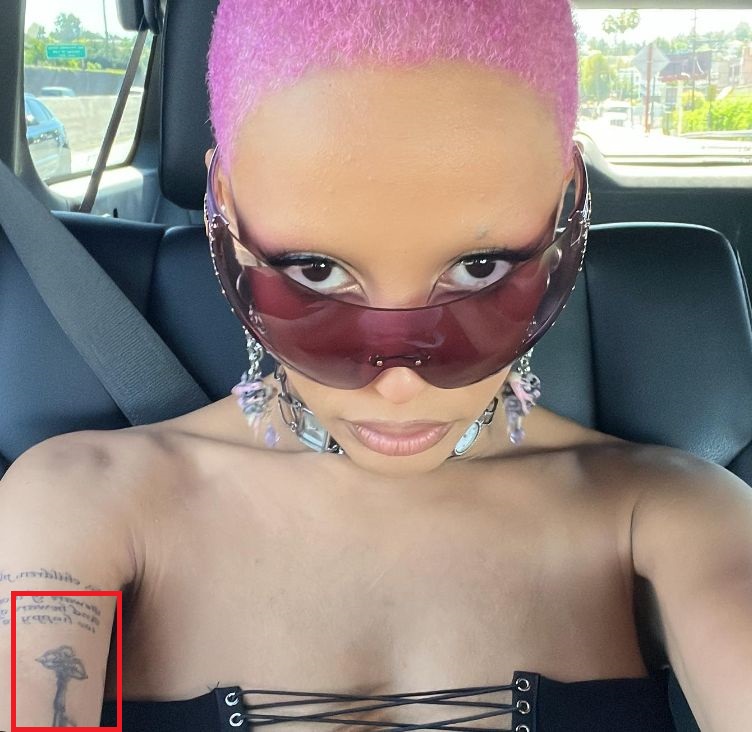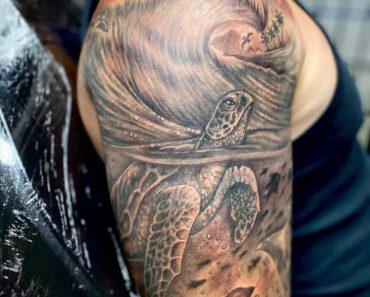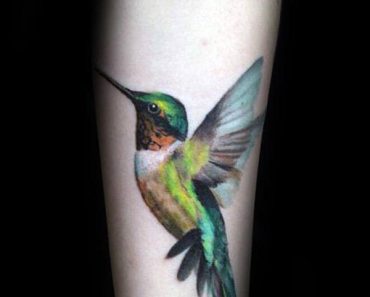Doja Cat is embracing her tattoo phase, as evidenced by her latest ink display on March 23, only two months after beginning her collection. During the 2023 Grammy Awards on Feb. 5, the “Vegas” singer subtly revealed her first two tattoos while walking the red carpet. Before the event, Doja tweeted about getting her first tattoos but didn’t provide any further information. Fans only caught a glimpse of the two intricate designs on her arms when she changed into her second outfit of the night. Below is a compilation of all of Doja Cat’s tattoos.
List of Tattoos by Doja Cat
Contents (Click to Jump)
1. Antelope Skull on Left Wrist
Doja took to her Instagram Stories on Thursday, March 23, to share that she had acquired fresh ink on her left wrist. The exquisite design was the creation of renowned tattoo artist Brian Woo, also known as Dr. Woo, and depicts an antelope skull. The symbol holds various connotations in different cultures, but Doja chose not to disclose her reasons for selecting this specific imagery.
2. Devil Tattoo on her Left Bicep
The tattoo on her inner left bicep portrays a meticulously drawn devil brandishing a pitchfork.
3. Spider Tattoo on Left Arm
Below this devil figure, Doja exhibited a delicate spider tattoo on her forearm. The design was executed in a comparable style, albeit slightly more pronounced and conspicuous in its position.
4. Devil Tattoo on Bicep
She has another devil tattoo on the outer side of her bicep.
5. Devil Tattoo on Forearm
In 2023, Doja faced significant criticism for her latest tattoo. She clarified that the design represents imperfection, rather than any demonic symbolism. The 27-year-old’s contentious ink on her left forearm is inspired by a Giovanni Battista Bissoni illustration from Italian philosopher Fortunio Liceti’s 1634 work, De Monstruorum Causis, Natura et Differentiis (On the Reasons, Nature, and Differences of Monsters). Liceti perceived deformity not as a negative outcome of errors or failures in nature, but rather as a display of nature’s artistic ingenuity, adapting to and overcoming imperfections in materials to create even more remarkable forms.
6. Back Tattoo
In June, Doja Cat shared an image of her latest tattoo, a large and detailed skeletal portrayal of a bat, located on her back. “Bats often represent death in the sense of letting go of the old, and bringing in the new,” she said in a post. “They are symbols of transition, of initiation, and the start of a new beginning.”
7. Hand Tattoo
Doja Cat also revealed a photo showcasing her right hand, adorned with an eyeball tattoo pierced by a sword. Additionally, her middle finger features unique designs, and near each nail, there are small, distinct dots.
8. Scythe Tattoo on her Head
The tattoo highlighted behind Doja Cat’s ear is a scythe, which is often associated with the idea of harvest, cycles, or sometimes the passage of time.
9. ‘4’ Tattoo on her Arm
She has a small 4 number on her arm which represents balance, according to one of her Instagram posts.
10. Quote on Arm
The phrase running down her other arm is a reminder to be genuine with our emotions, especially in matters of love, emphasizing that love should be natural and not forced.
11. Quote on her Wrist
The tattoo on her wrist suggests that sometimes problems are better left alone to resolve themselves, much like muddy water becomes clear when it is undisturbed.
12. Quote on Upper Arm
The quote on her arm reflects on the idea that one cannot avoid their own pain or fear simply by wishing it away; these are natural parts of being human that we have to confront.
13. Key Tattoo on Upper Arm
The intricacy of the key suggests a sense of unlocking mysteries or accessing something personal and significant to the artist.
14. Abstract Tattoo on Arm
The design features a spider suspended within an intricate web, added with fine lines that give it a delicate yet edgy appearance.
15. Om Tattoo near Wrist
Doja Cat’s tattoo, highlighted on her arm, features the ‘Om’ symbol, which is a sacred spiritual icon in Indian religions. It often signifies the essence of the ultimate reality, consciousness, or Atman (soul, self within), reflecting a deep spiritual meaning that could represent inner peace and the connection with the universe in her personal journey.

